Overview
Create a voice agent with a simple prompt, attach it with your phone number, and make your first call.Step 1:
Login to the Unpod dashboard using your credentials.Click on AI Studio from the left sidebar of the dashboard as shown below.
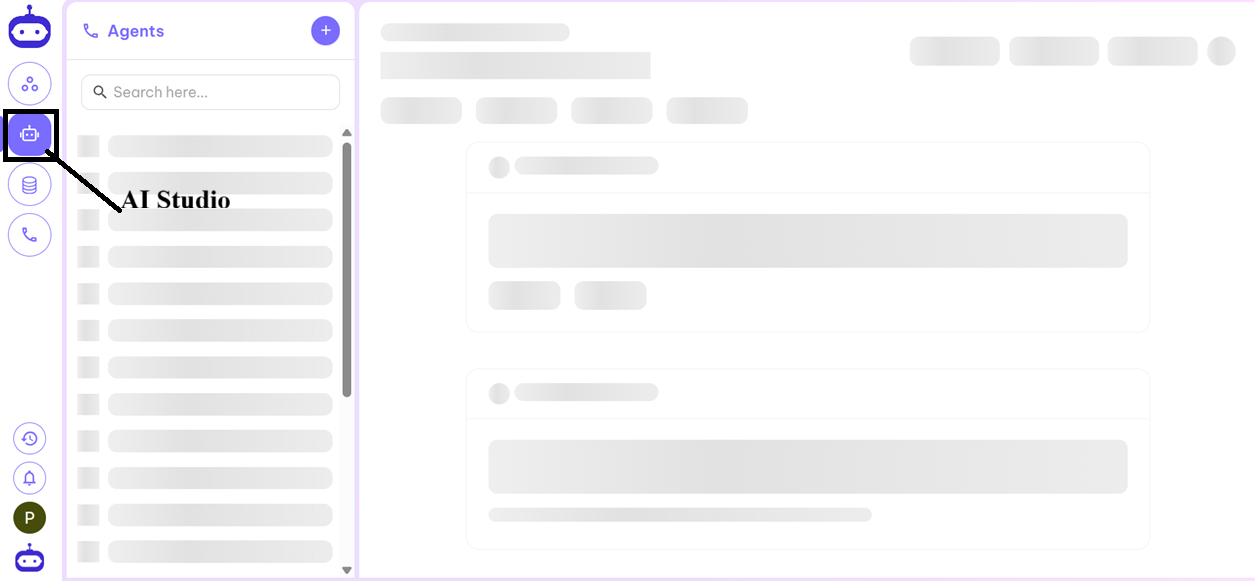
Step 2
The page will be blank initially since you don’t have any agent yet.To create your first agent, click on the ➕ symbol as shown below.
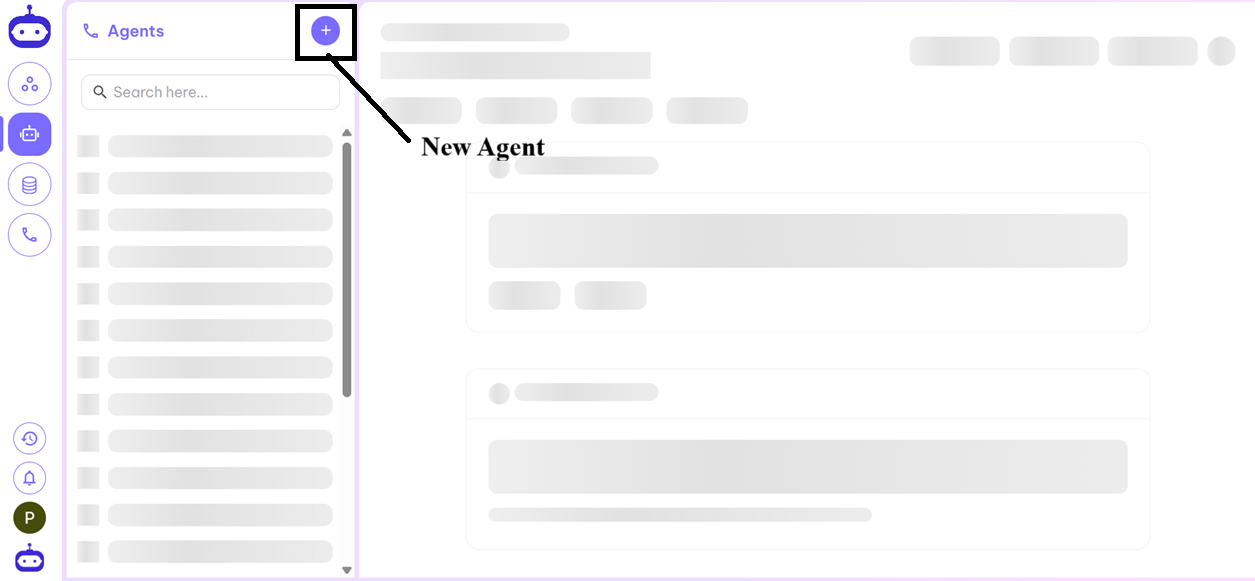
Step 3
After clicking ➕, you’ll be redirected to the creation page to start setting up your first agent.
Step 4
Give your agent a name according to your product or organization.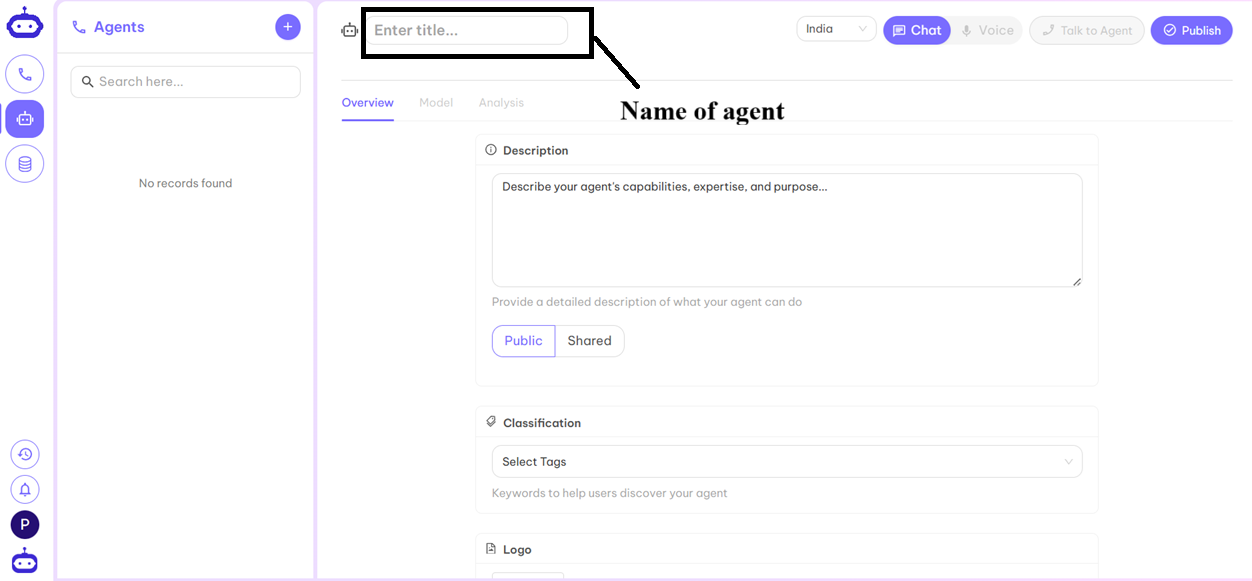
Step 5
Fill in all the highlighted details.Mandatory fields: Description, Classification, and Access Type (Public or Shared).
For Classification, choose the relevant tag from the dropdown menu based on your product or organization.
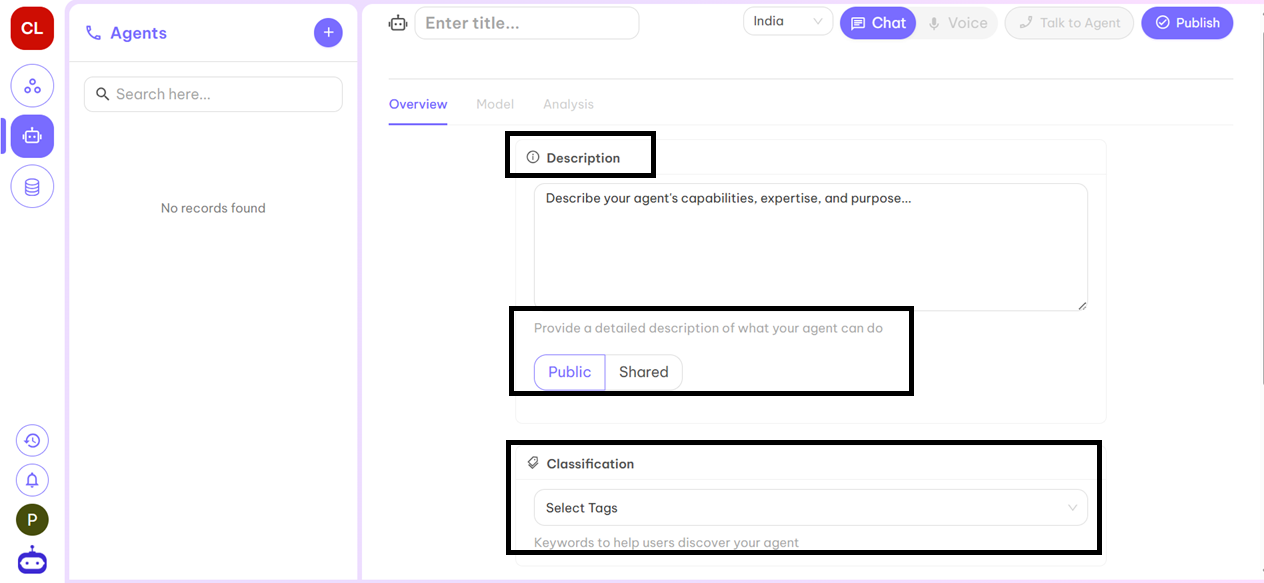
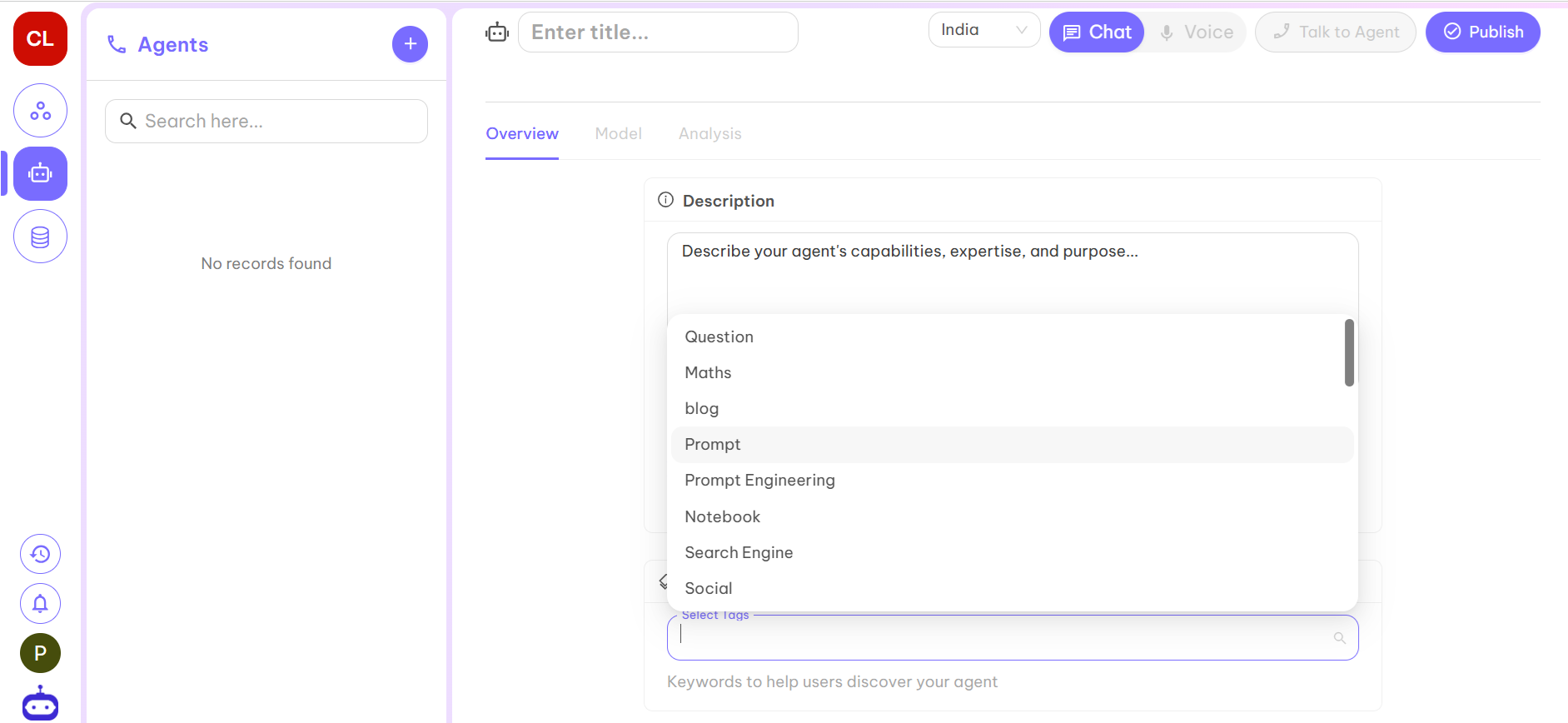
Step 6
After completing the form, click Save to create your agent.
Step 7
Your created agent will now appear on the left side of the dashboard.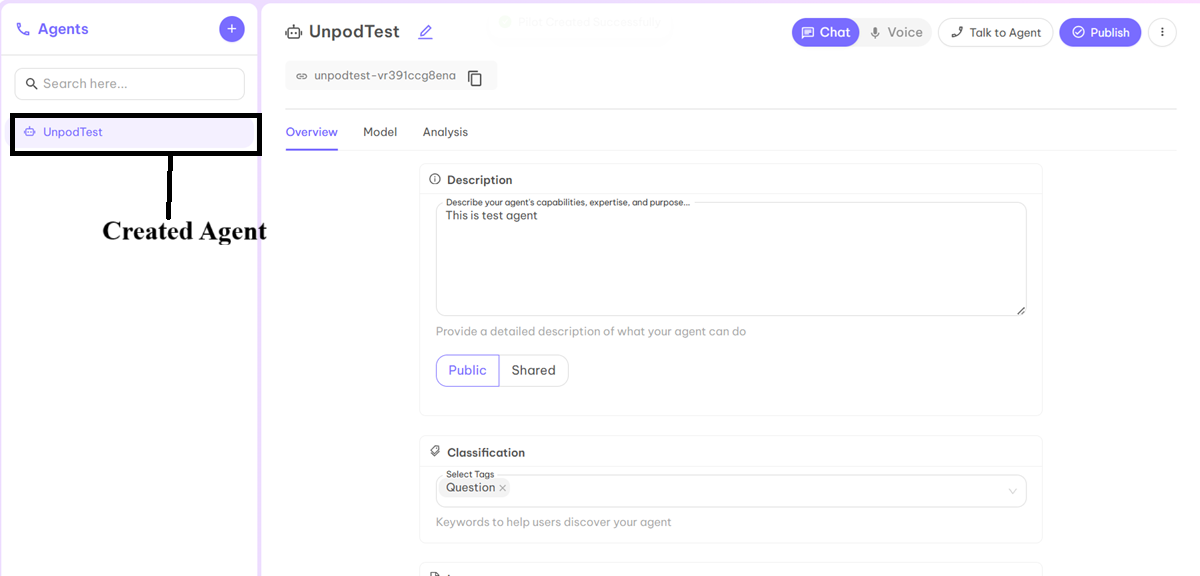
Step 8
Now decide the type of your agent — Chat Agent or Voice Agent.After selecting the type, fill in the remaining details in the next steps.
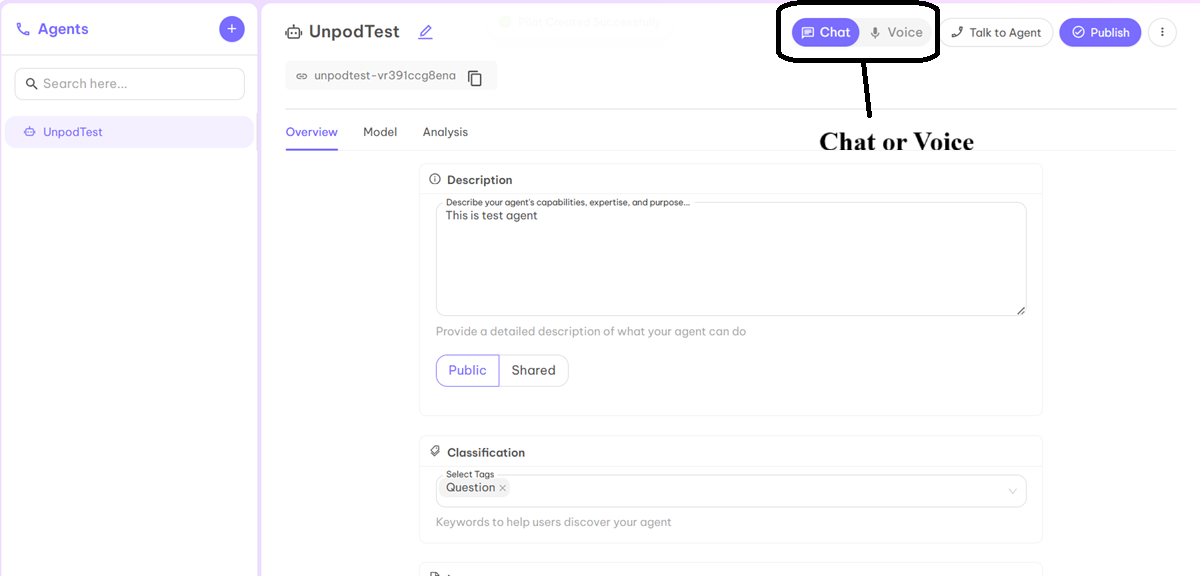
Model
A “model” refers to a customizable AI agent or system designed to perform specific tasks—such as managing conversations, automating support, or executing workflow actions. In this section, you can define how your AI agent interacts with users—from the moment it initiates a conversation to the way it understands and resolves customer queries. You can also include the system prompt, which acts as the agent’s guiding framework—shaping its tone, behavior, and decision-making process throughout each interaction. Essentially, this is where you outline your AI’s personality, purpose, and process—how it greets, assists, and delivers solutions seamlessly.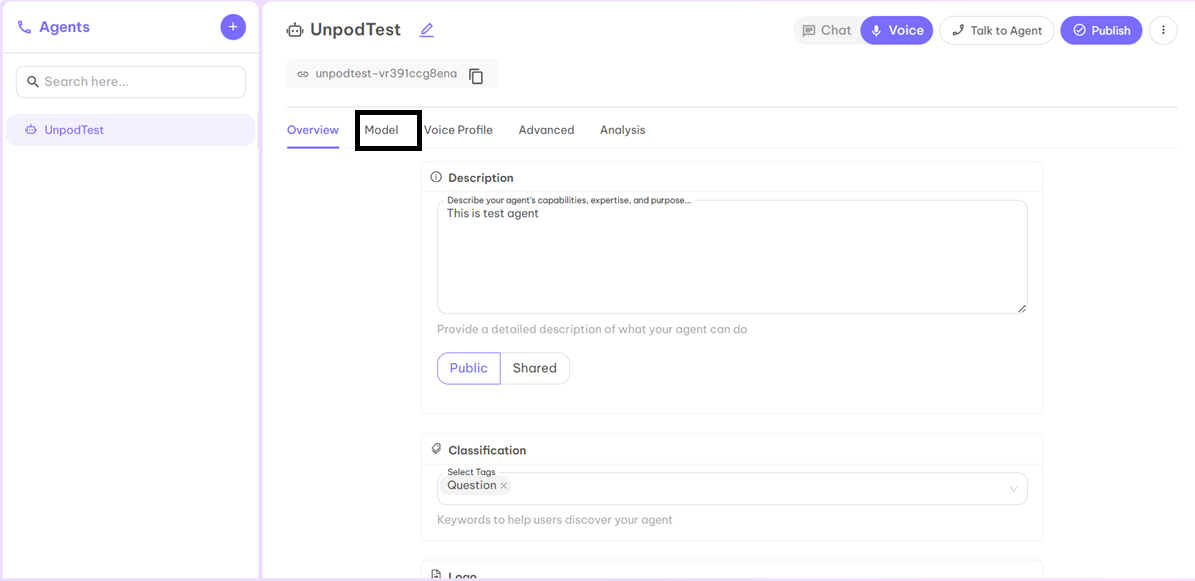
Step 1 — Persona
Enter the Greeting Message (how the agent starts a conversation) and System Prompt (defines agent behavior throughout the chat).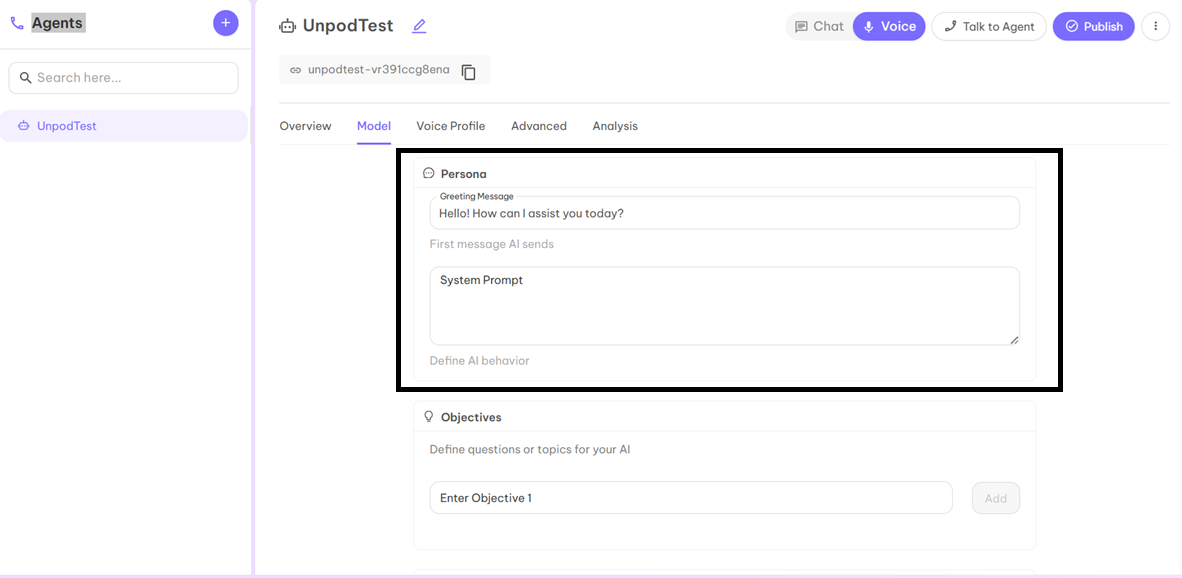
Step 2 — Objectives (Optional)
If you want your AI to focus on specific questions or topics, define them here. You can add multiple objectives.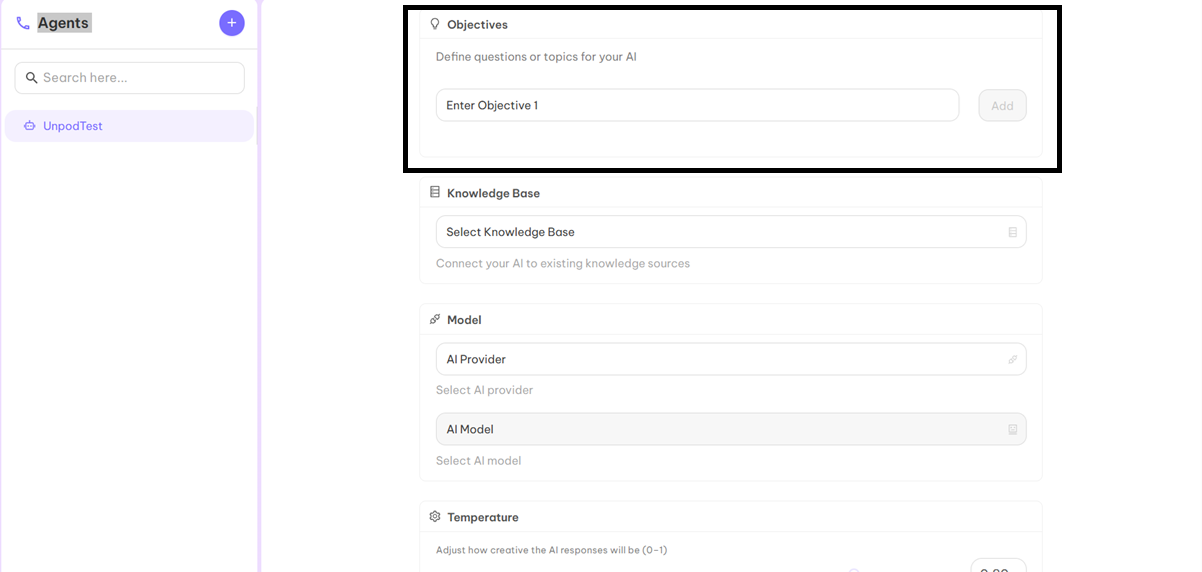
Step 3 — Knowledge Base (Optional)
If FAQs are too large to include in the System Prompt, create a Knowledge Base and link it to your Voice Agent.How to Create a Knowledge Base?
- On the dashboard, click on Knowledge Base from the left corner.
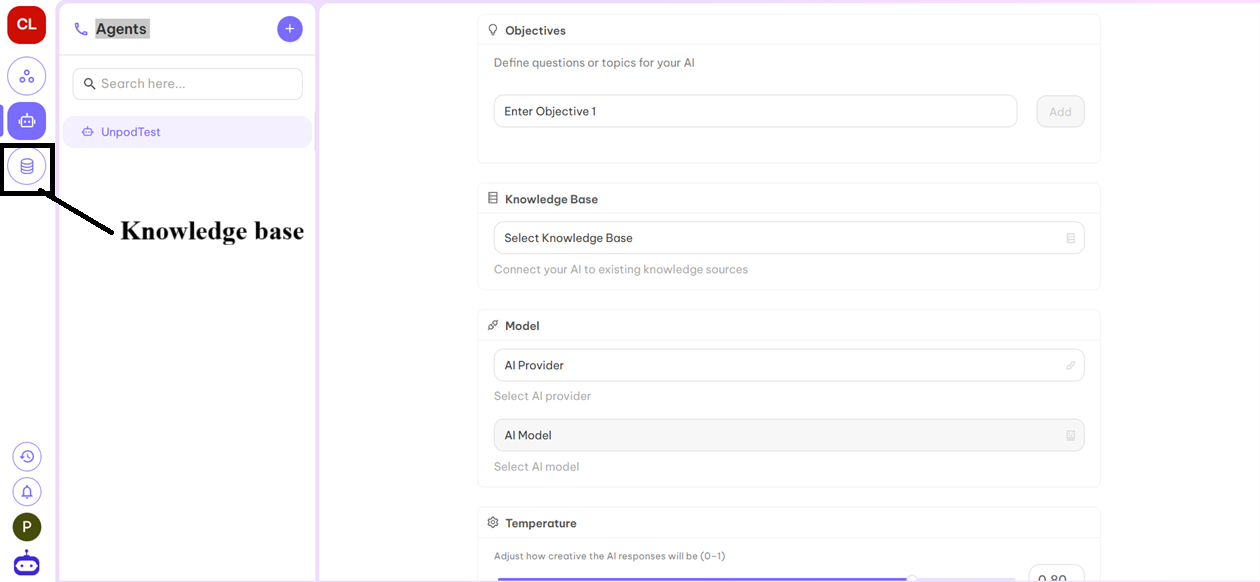
- Click Add to create a new Knowledge Base.
- Fill in the required fields: Name, Type, Description, and Visibility.
- Everyone: Accessible to everyone
- Shared: Accessible only to shared email IDs
- Private: Accessible only to you
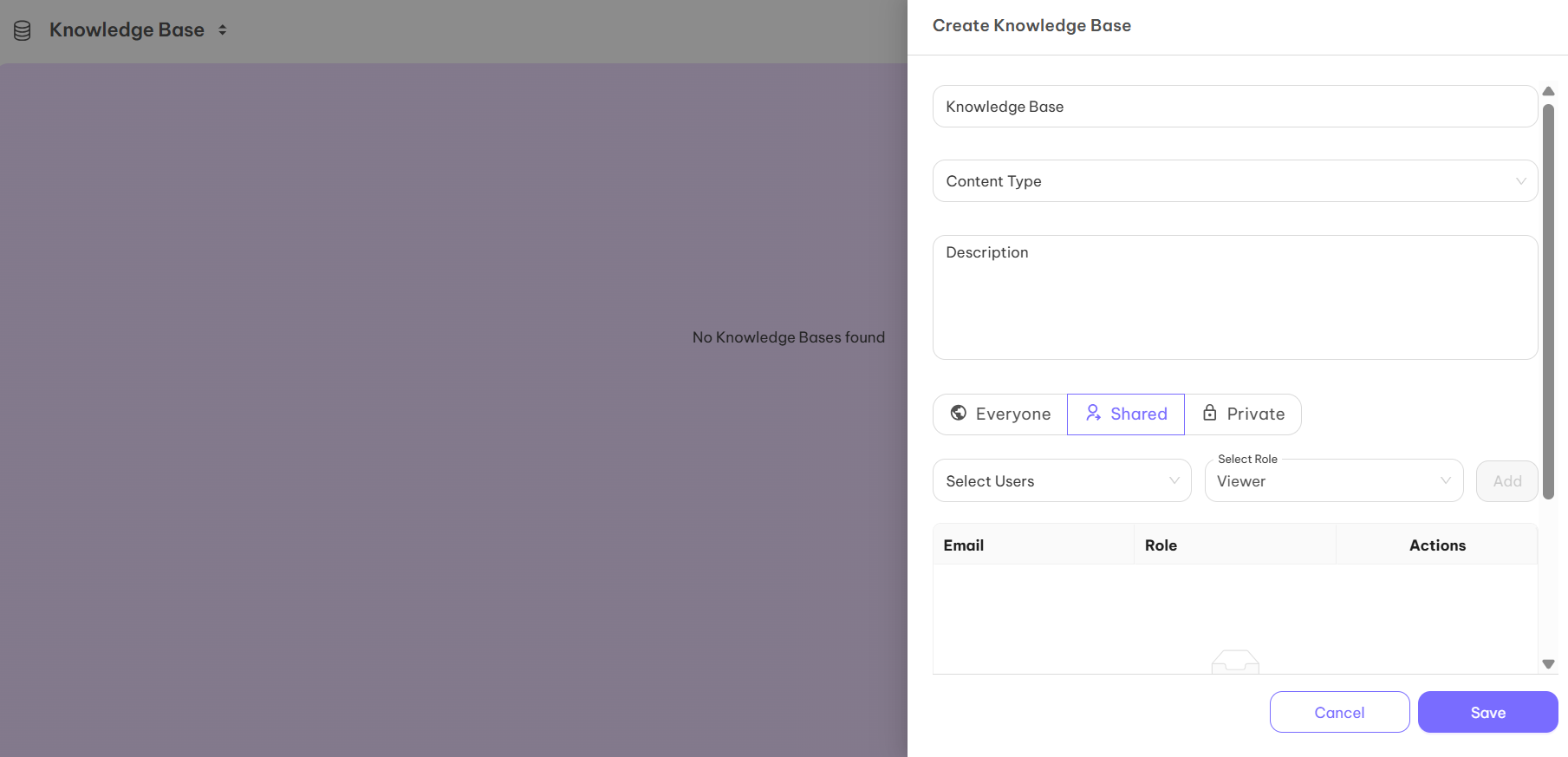
- Click Next to open the Add Schema Fields page.
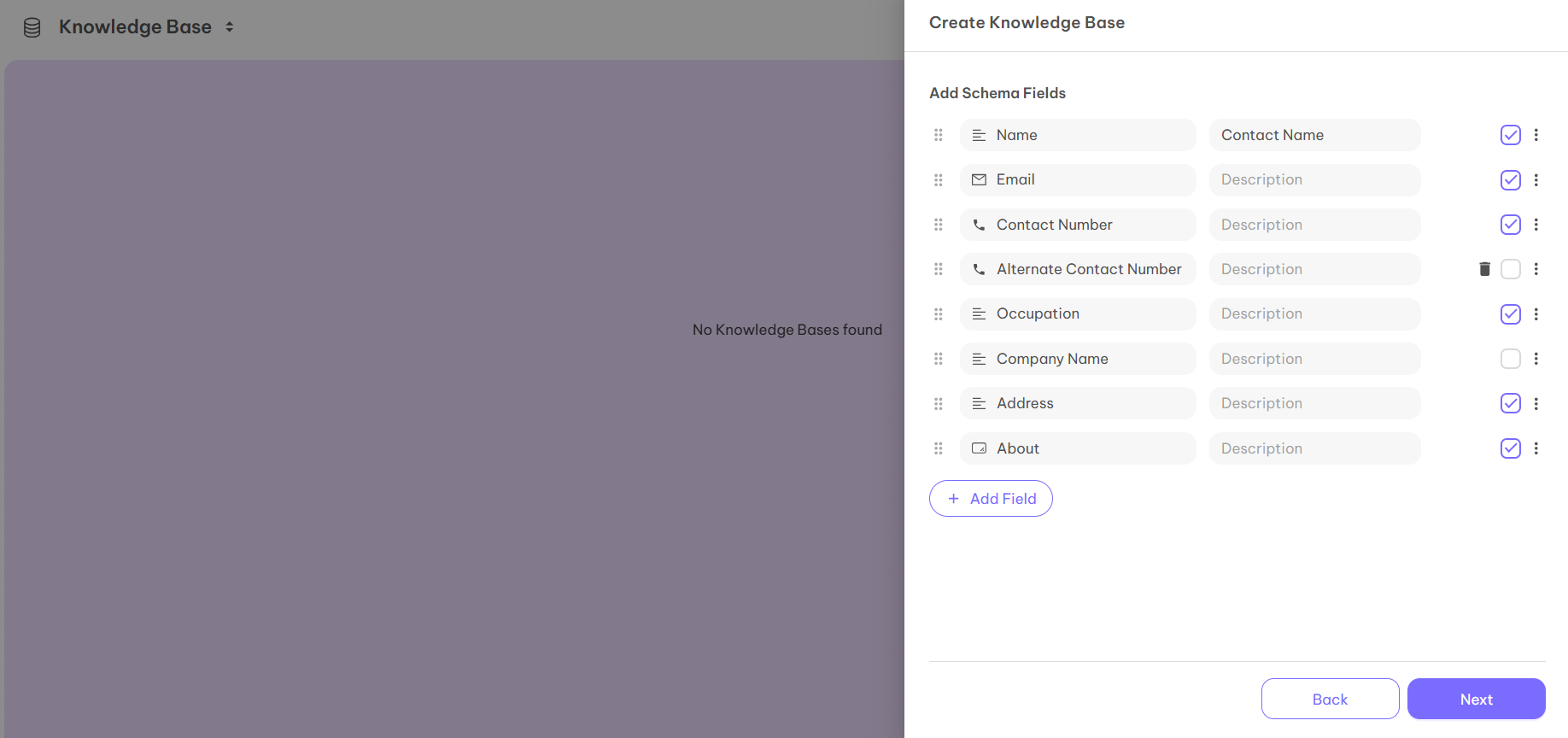
- Fill in the required schema details and click Next again.
- On the Create Knowledge Base page, upload your reference file (organization or product info) and click Save.

Step 4 — Select Model
You’ll have two dropdowns:- AI Provider: Choose from options like OpenAI, Groq, Google, Azure, etc.
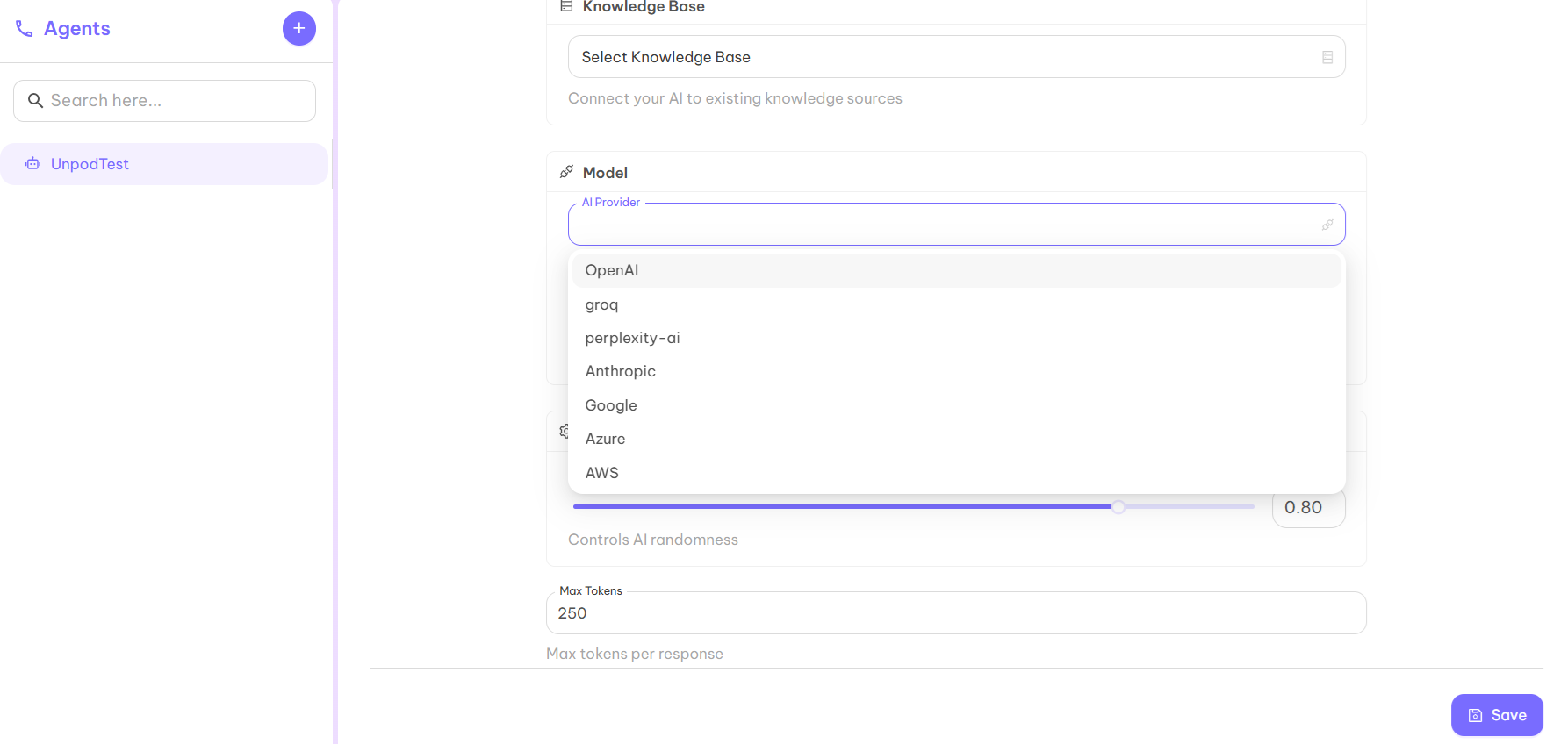
- AI Model: Choose from available models like
gpt-3.5-turbo,gpt-4o, etc.
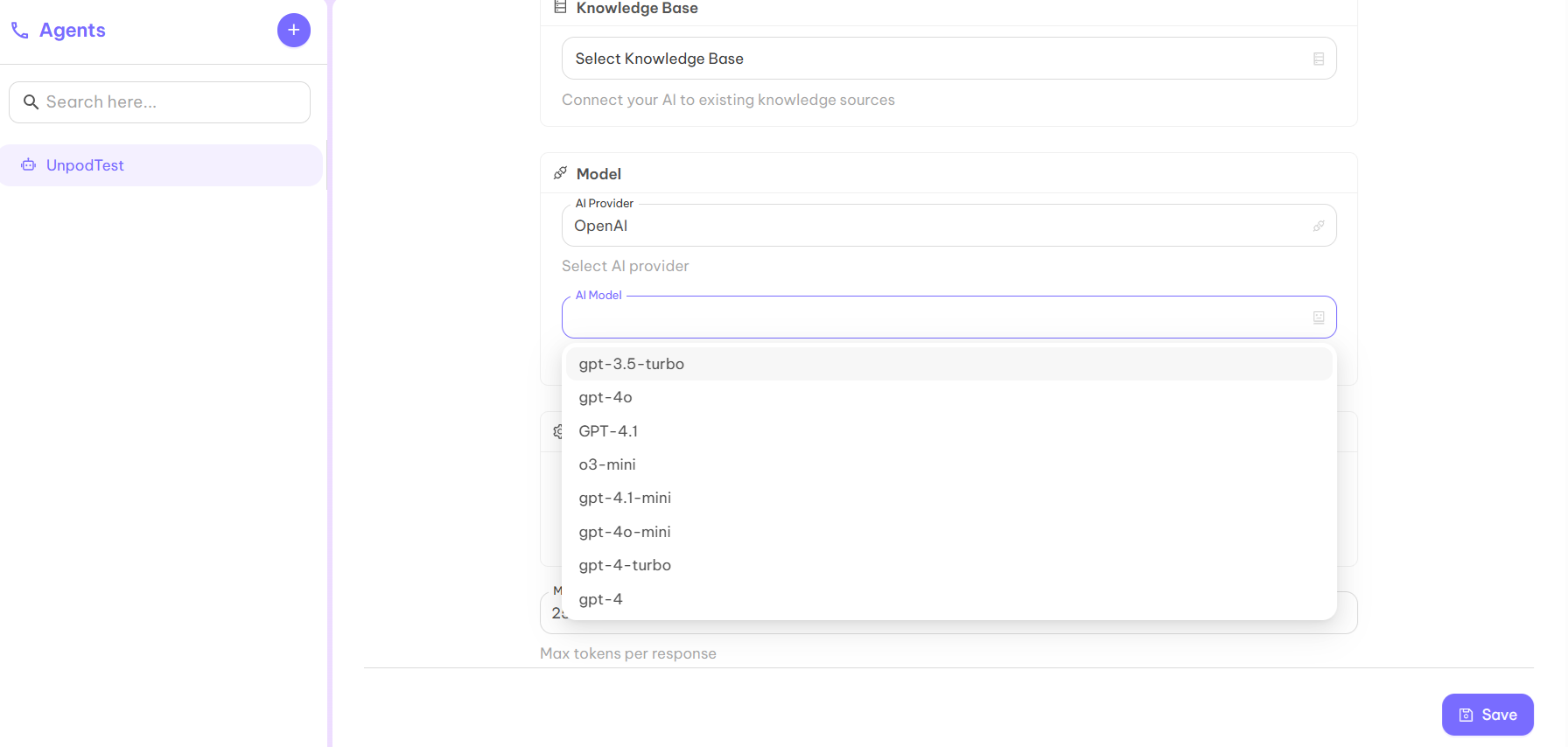
Step 5 — Temperature
Adjusts the randomness and creativity of the AI’s responses.Recommended value: 0.5
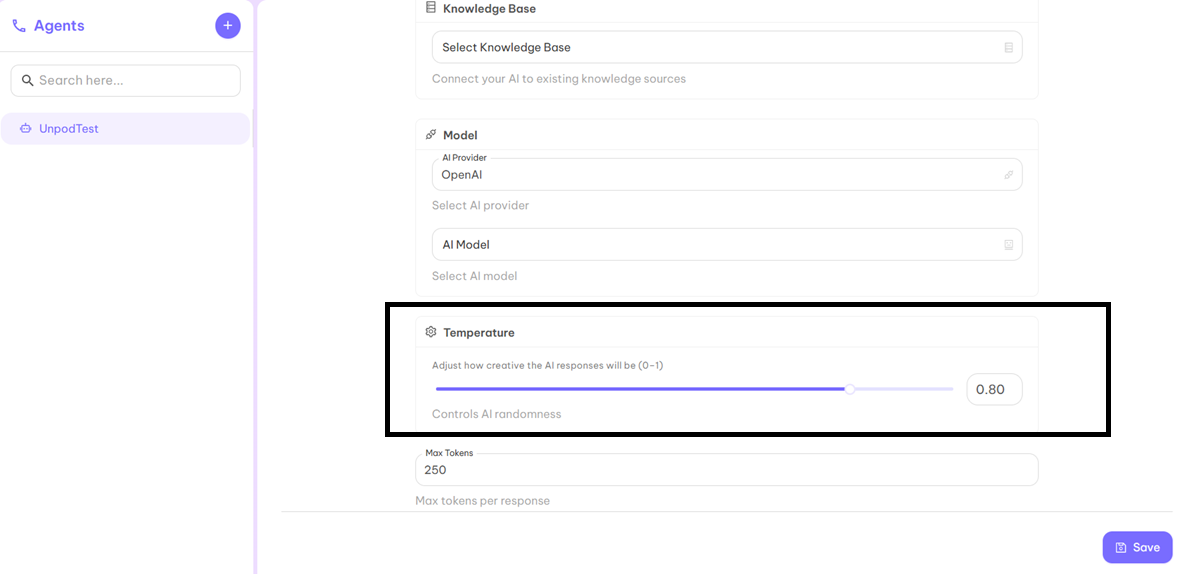
Step 6 — Max Tokens
Sets the maximum token count for output per response.Preferred value: 250
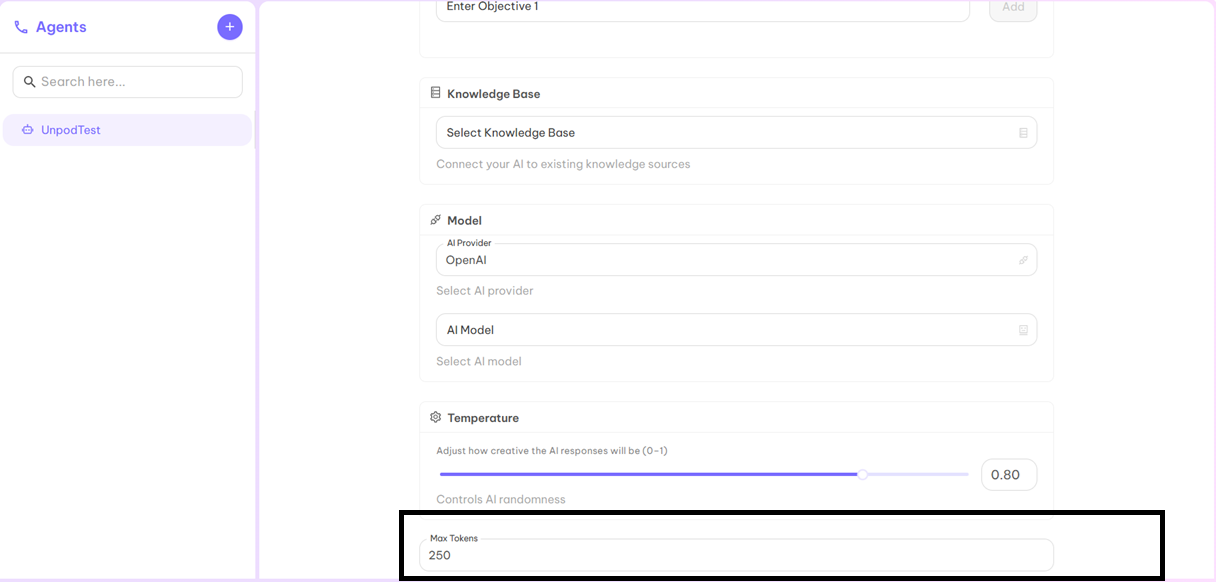
Step 7
After completing all details, click Save and move to Voice Profile.Voice Profile
A voice profile is a collection of settings that determine how an AI or virtual assistant sounds during conversations. It defines attributes such as voice gender, accent, tone, speed, and emotional style—helping shape the overall personality of the assistant. By customizing these elements, businesses can create a natural, consistent, and brand-aligned voice that enhances user engagement. Voice profiles make automated calls and chat interactions feel more human, relatable, and personalized for every listener.Step 1
Click Select to choose a Voice Profile from the given options.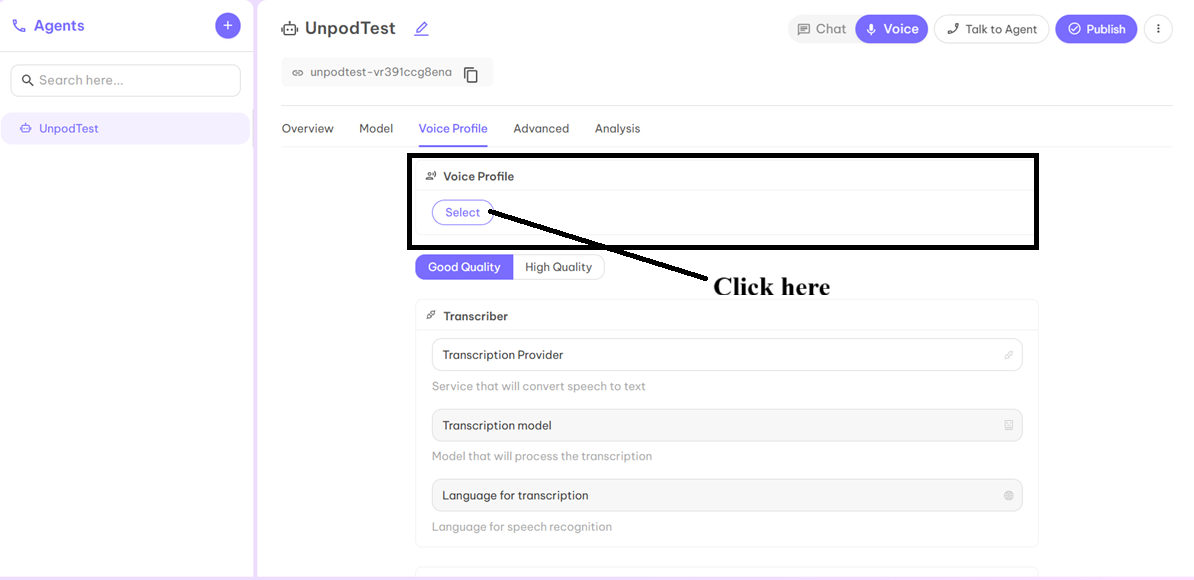

Step 2 — Quality
Choose between:- Good Quality Agent — Slight AI tone, cost-effective.
- High Quality Agent — Natural, human-like voice.
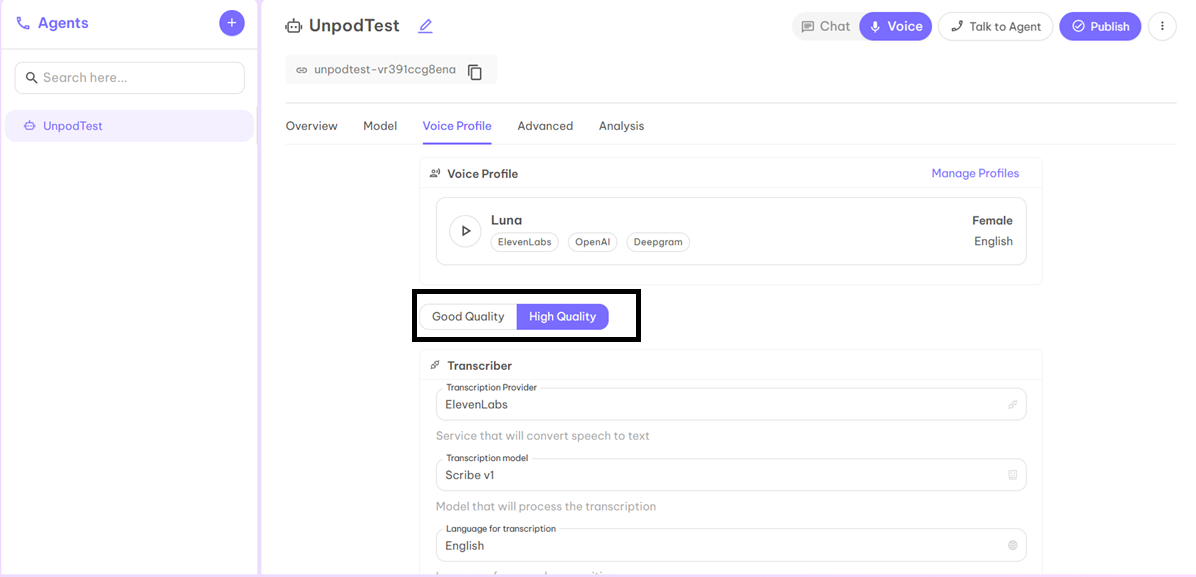
Step 3 — Transcriber
Set up:- Transcription Provider: Converts speech to text.
- Transcription Model: Processes transcription.
- Language for Transcription: Sets speech recognition language.
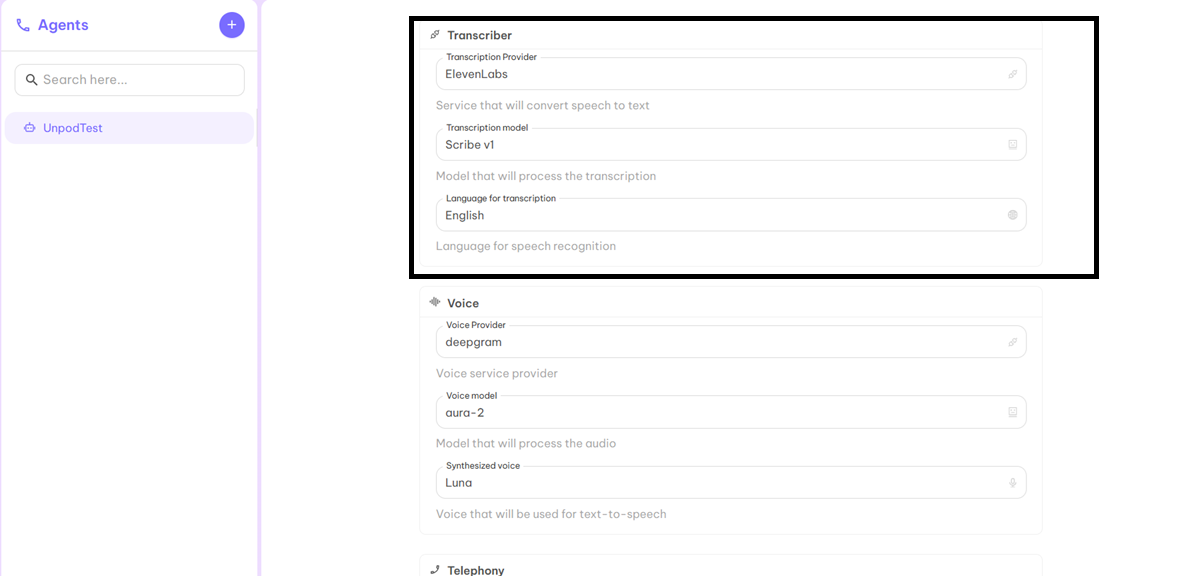
Step 4 — Voice
Configure:- Voice Provider: Voice service provider
- Voice Model: Audio processing model
- Synthesized Voice: Name of the voice used for text-to-speech
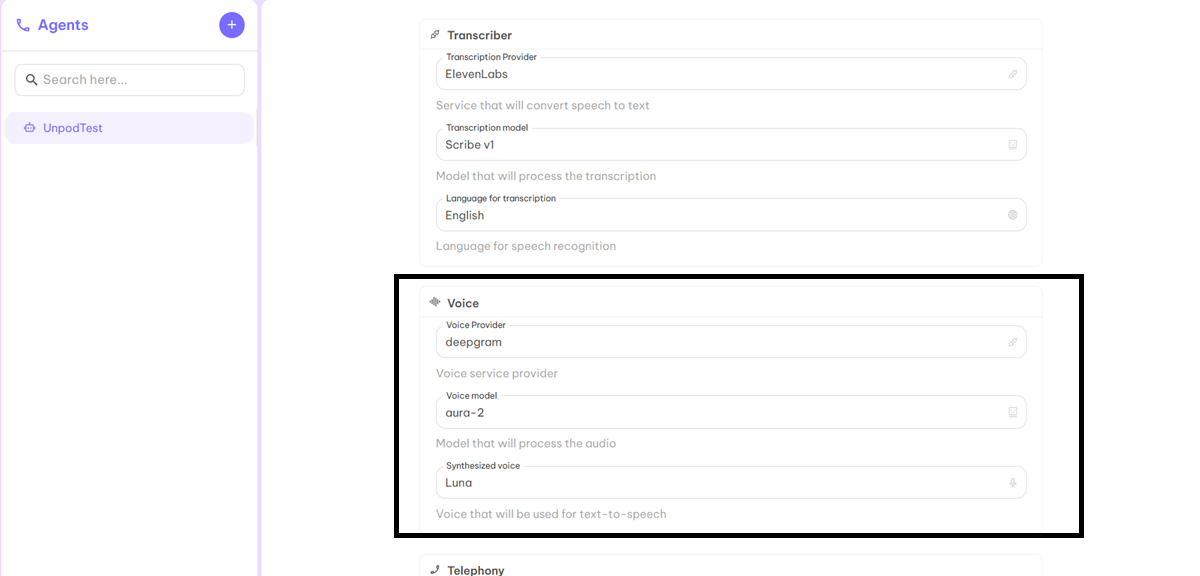
Step 5 — Telephony
Add the phone number you want your Voice AI Agent to connect with.
Step 6 — Config (Optional)
Add:- Config Key
- Config Value
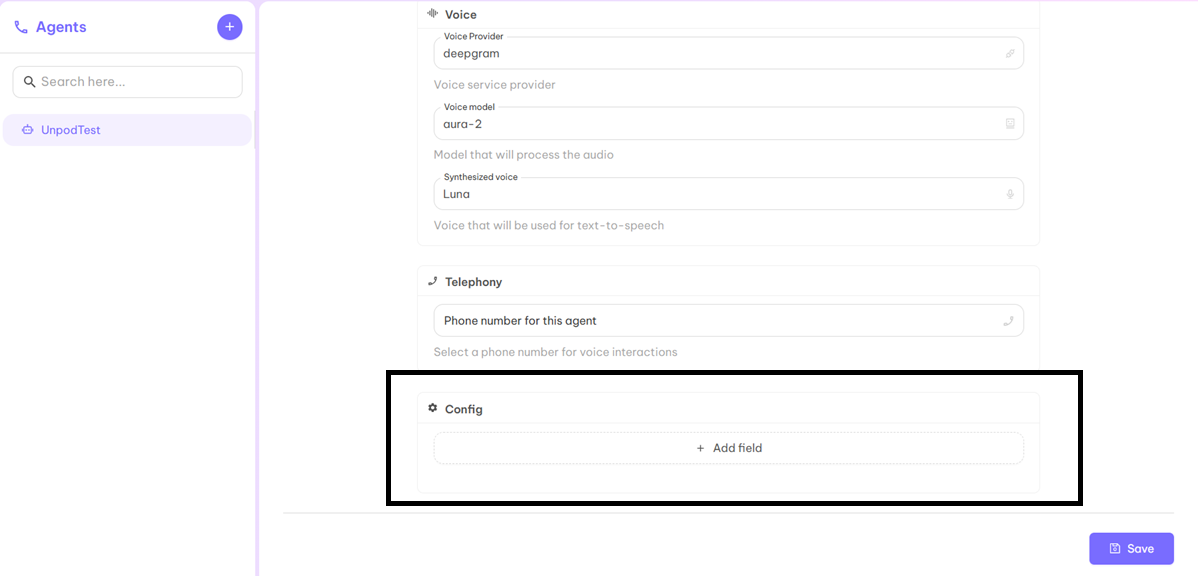
Advanced
The Advanced feature allows you to automate outgoing calls using your Voice AI agent. Once configured, your AI can automatically call the provided number at a scheduled time—making outreach seamless and efficient.Step 1 – Auto Reachout Tab
The “Auto Reachout” tab includes the following parameters for setup:- Enable Follow-up: Automatically schedules a follow-up call with the user when needed.
- Enable Callback: Allows the assistant to initiate a callback if the previous call was missed or disconnected.
- Handover Number: Specifies the number where calls will be transferred if a human handover is triggered.
- Calling Hours: Defines the time window during which automatic calls can be made. You can set flexible scheduling rules based on your preferred time slots.
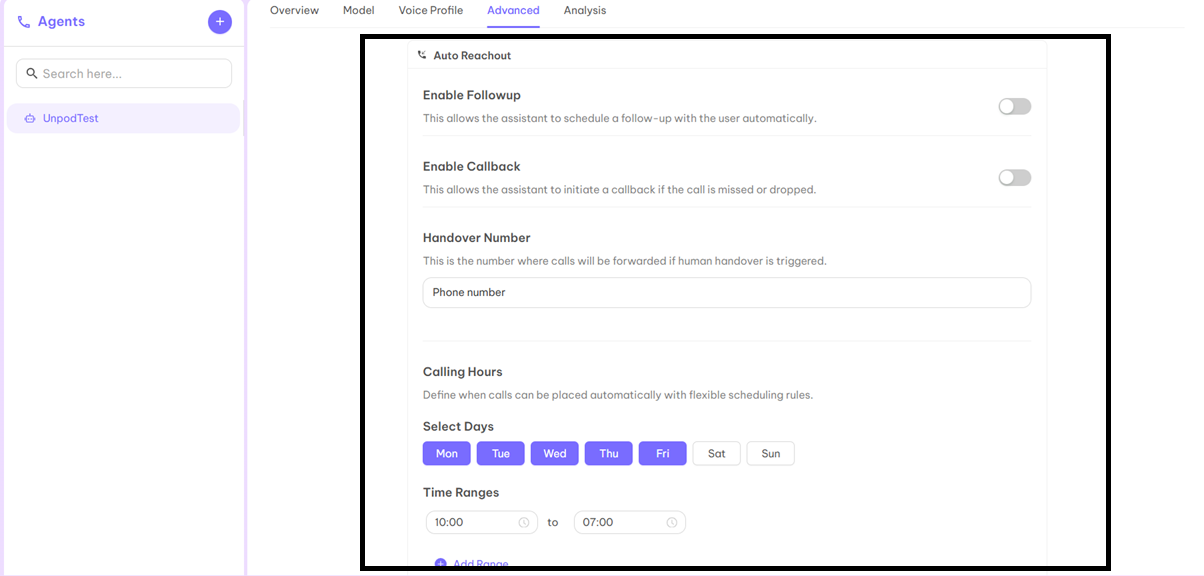
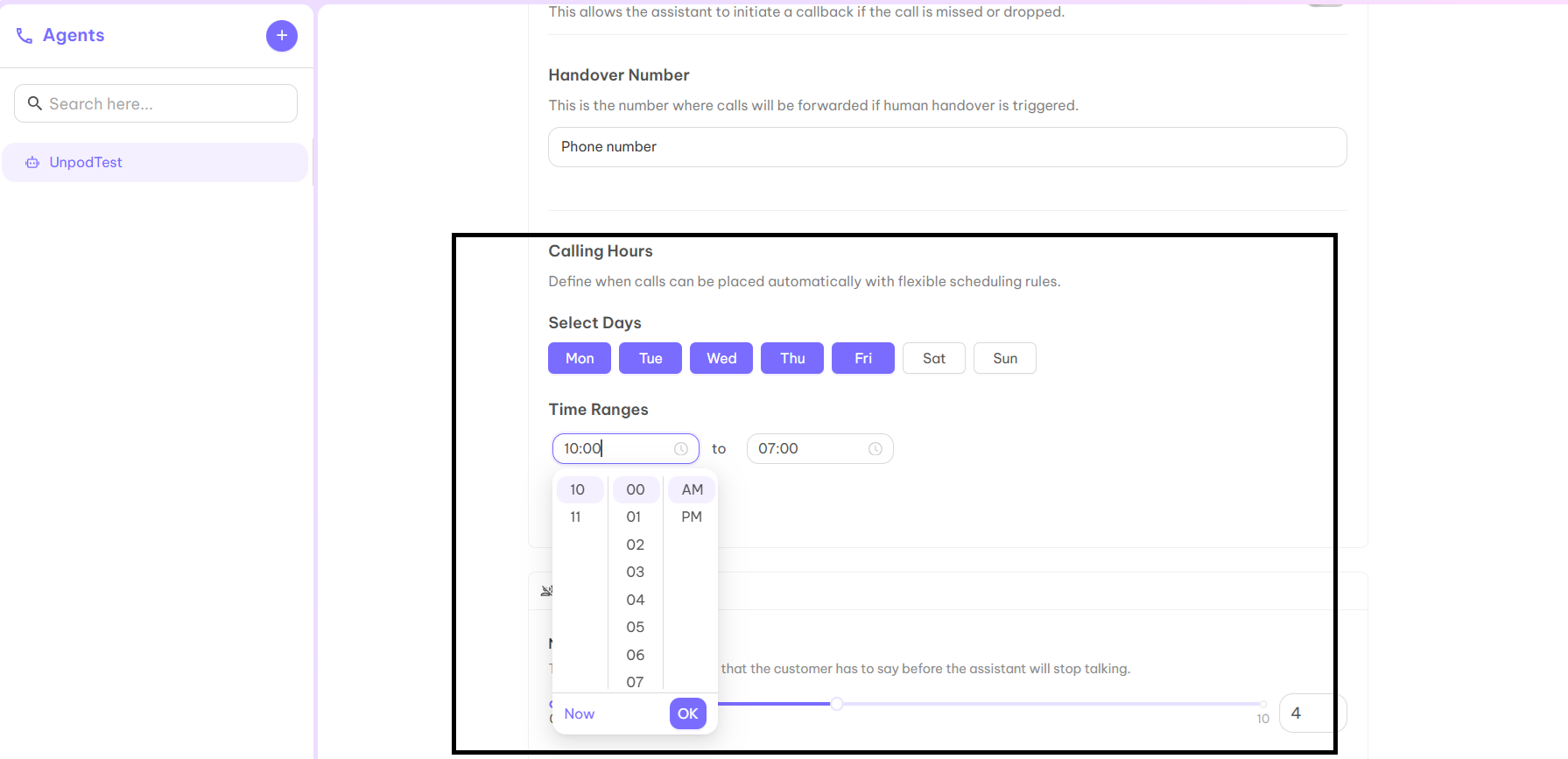
Step 2 – Stop Speaking Plan
The “Stop Speaking Plan” tab controls how your assistant manages interruptions during a call. It includes the following settings:- Number of Words: The number of words a customer must speak before the assistant stops talking.
- Voice Seconds: The time (in seconds) a customer can speak before the assistant pauses.
- Back Off Seconds: The delay (in seconds) before the assistant resumes speaking after an interruption.
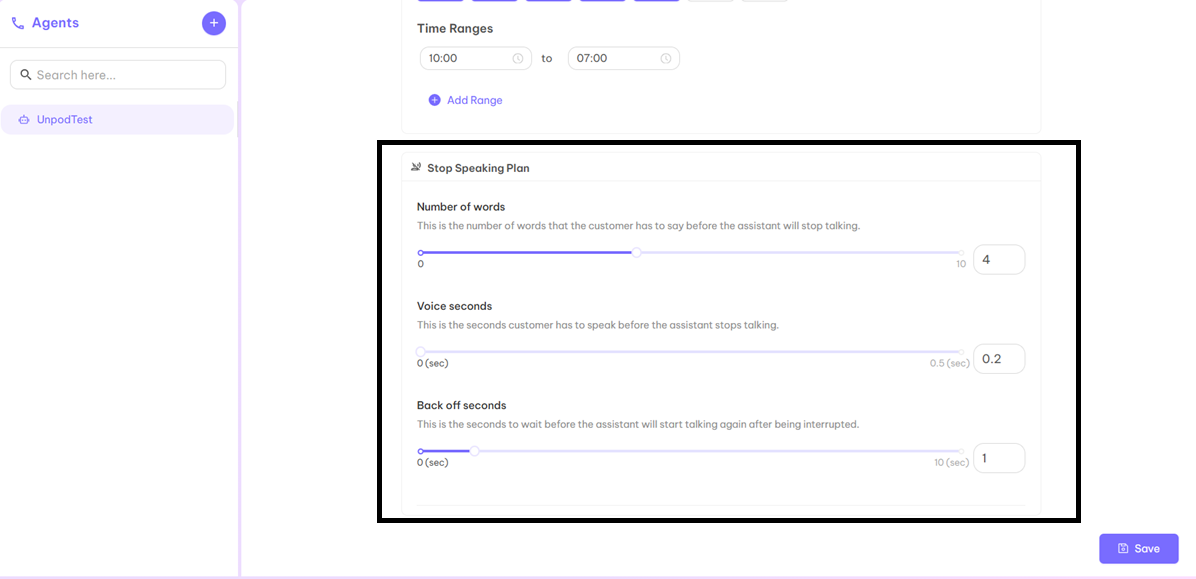
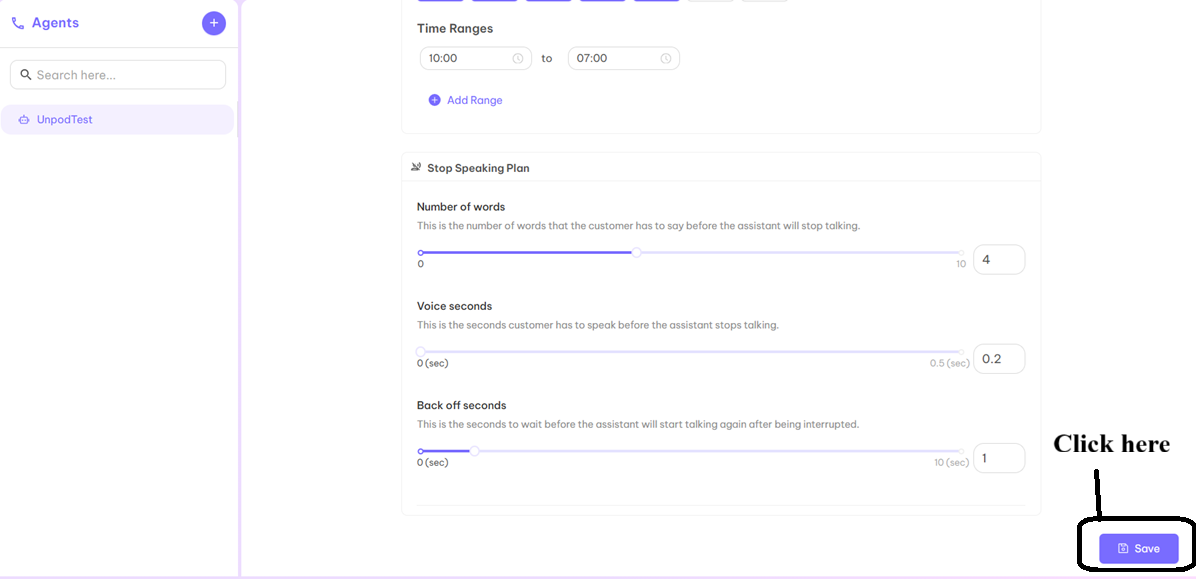
Analysis
The Analysis tab helps you evaluate and understand the success of your call logs. It includes the following sections:Step 1 – Summary
Use this to define the prompt for summarizing calls. The generated summary is stored incalls.analysis.summary and can also be viewed on the Calls Log page.

Step 2 – Success Evaluation
Assess whether a call was successful. You can use the Rubric alone or combine it with a Success Evaluation Prompt. If both are provided, they are merged into a single instruction set for accurate evaluation.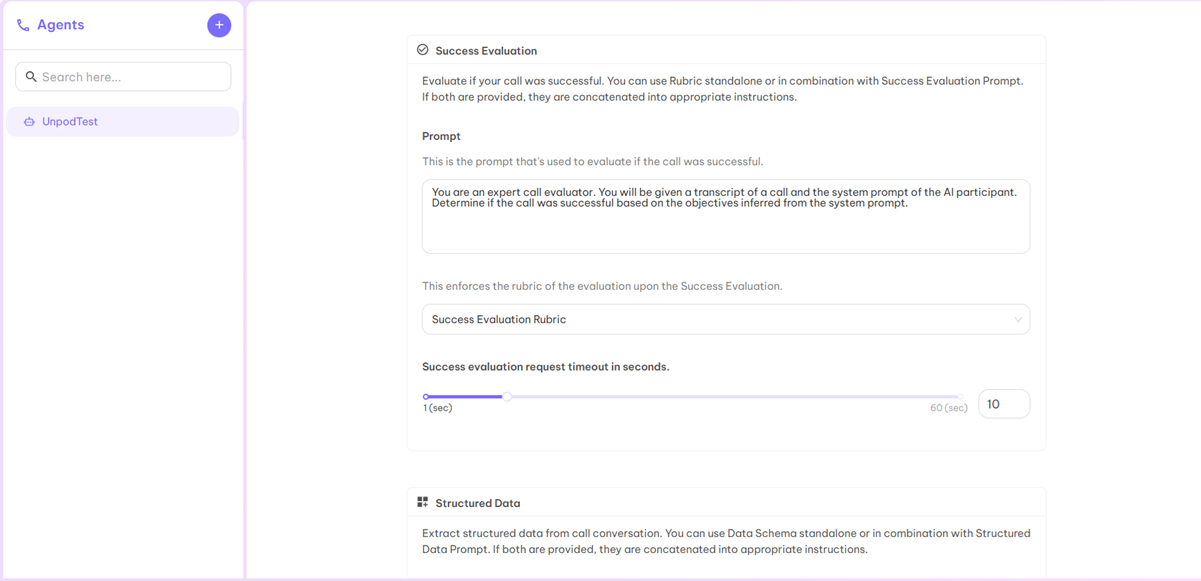
Step 3 – Structured Data
Extract structured data from call conversations. You can use a Data Schema alone or together with a Structured Data Prompt. When both are provided, they are combined into cohesive extraction instructions.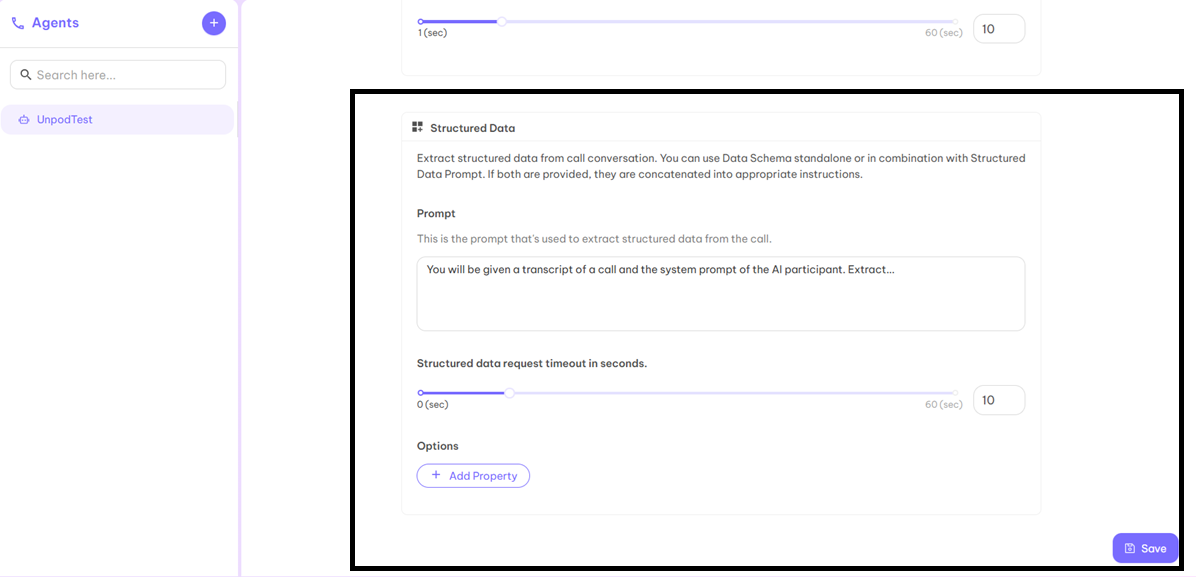
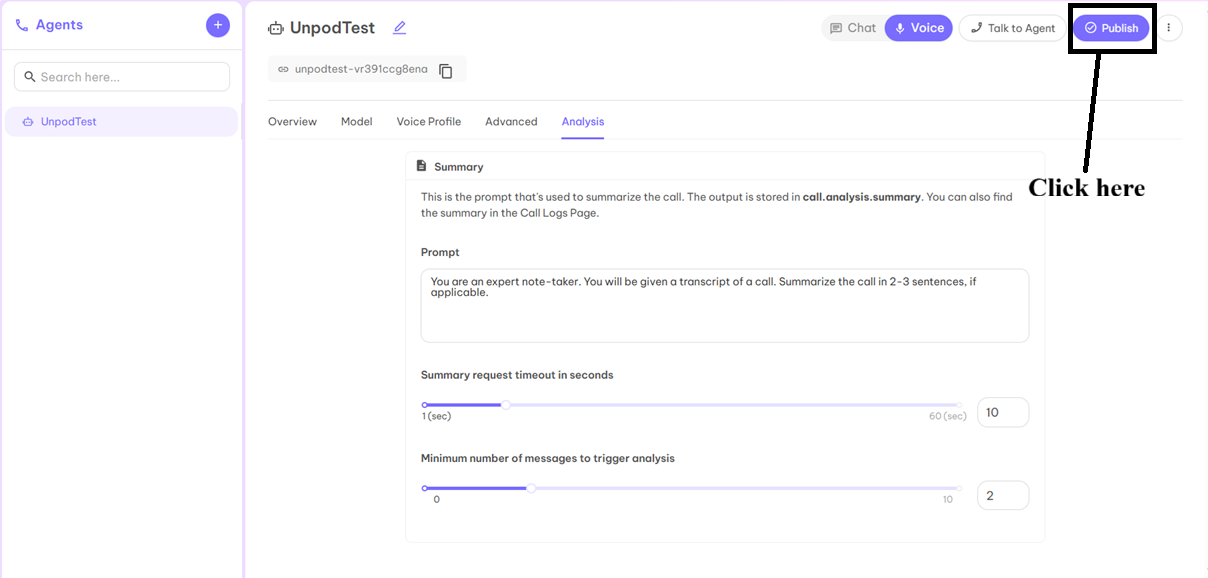
Your AI Agent is now ready to use!